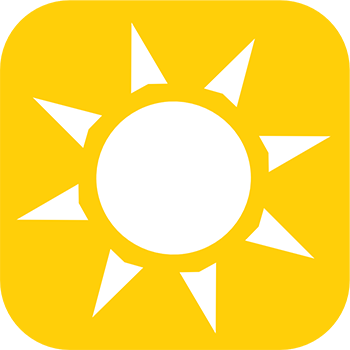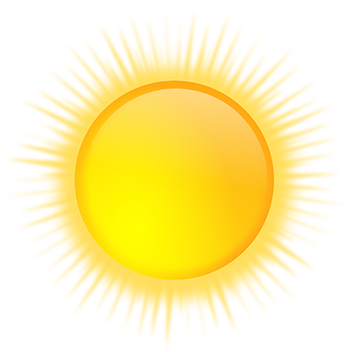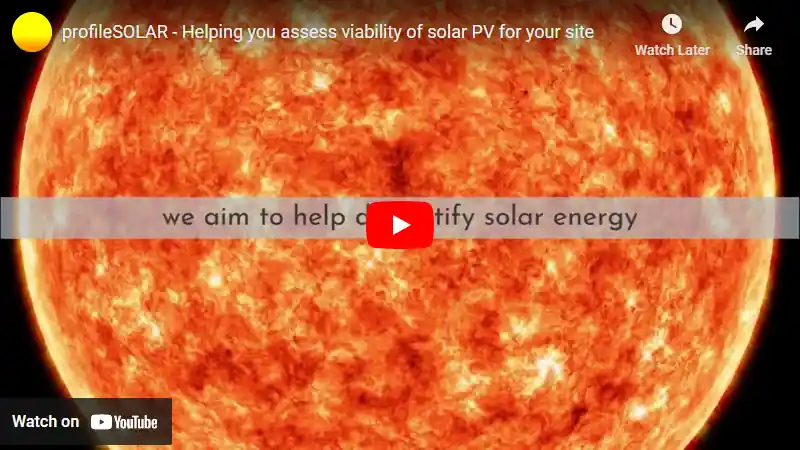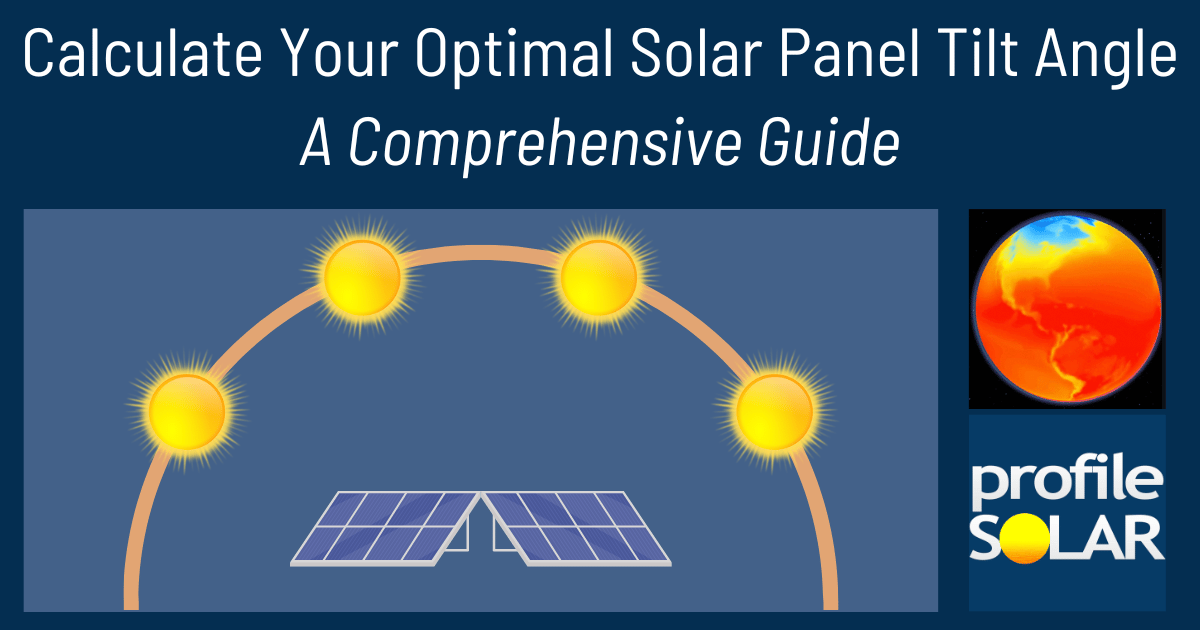

Durbanville, Western Cape, South Africa is a pretty good location for generating solar energy throughout the year because of its sunny climate. In simple terms, the amount of electricity you can get from each kilowatt of solar panels installed here varies with the seasons. You'll get about 8.98 units (kilowatt-hours or kWh) per day in summer and 7.22 units in spring - these are great times to generate solar power because the days are longer and sunnier.
During autumn, your output drops a bit to around 5.03 units per day, and winter gives you the least at about 3.56 units daily as there's less sunlight due to shorter days and more cloud cover.
To capture as much sunlight as possible all year round, if you're setting up fixed panels (panels that don't move), it's best to tilt them at an angle of 29 degrees facing north.
However, there might be some local factors that could affect how much energy your solar panels produce. For instance:
1) Dust: Durbanville is known for its dust during certain times of year which could settle on your panels reducing their efficiency.
Prevention: Regular cleaning can help keep dust off your panels ensuring they catch as much sunlight as possible.
2) Shading: Any tall buildings or trees nearby could cast shadows on your panels especially during mornings and late afternoons when the sun is low.
Prevention: When installing your system try to position it somewhere with little to no shading throughout the day.
3) Weather conditions like heavy rain or hail storms can also affect production.
Prevention: While you can't control weather events, using high-quality durable panels will ensure they withstand harsh weather conditions better thereby maintaining their performance over time.
So overall Durbanville seems like a good spot for solar power generation but taking into account these potential issues will help maximize output from your installation.
Note: The Southern Sub Tropics extend from -23.5° latitude South down to -35° latitude.
So far, we have conducted calculations to evaluate the solar photovoltaic (PV) potential in 150 locations across South Africa. This analysis provides insights into each city/location's potential for harnessing solar energy through PV installations.
Link: Solar PV potential in South Africa by location
Solar output per kW of installed solar PV by season in Durbanville
Seasonal solar PV output for Latitude: -33.8333, Longitude: 18.65 (Durbanville, South Africa), based on our analysis of 8760 hourly intervals of solar and meteorological data (one whole year) retrieved for that set of coordinates/location from NASA POWER (The Prediction of Worldwide Energy Resources) API:




Ideally tilt fixed solar panels 29° North in Durbanville, South Africa
To maximize your solar PV system's energy output in Durbanville, South Africa (Lat/Long -33.8333, 18.65) throughout the year, you should tilt your panels at an angle of 29° North for fixed panel installations.
As the Earth revolves around the Sun each year, the maximum angle of elevation of the Sun varies by +/- 23.45 degrees from its equinox elevation angle for a particular latitude. Finding the exact optimal angle to maximise solar PV production throughout the year can be challenging, but with careful consideration of historical solar energy and meteorological data for a certain location, it can be done precisely.
We use our own calculation, which incorporates NASA solar and meteorological data for the exact Lat/Long coordinates, to determine the ideal tilt angle of a solar panel that will yield maximum annual solar output. We calculate the optimal angle for each day of the year, taking into account its contribution to the yearly total PV potential at that specific location.

Seasonally adjusted solar panel tilt angles for Durbanville, South Africa
If you can adjust the tilt angle of your solar PV panels, please refer to the seasonal tilt angles below for optimal solar energy production in Durbanville, South Africa. As mentioned earlier, for fixed-panel solar PV installations, it is optimal to maintain a 29° North tilt angle throughout the year.
| Overall Best Summer Angle | Overall Best Autumn Angle | Overall Best Winter Angle | Overall Best Spring Angle |
|---|---|---|---|
| 18° North in Summer | 39° North in Autumn | 49° North in Winter | 27° North in Spring |
Our recommendations take into account more than just latitude and Earth's position in its elliptical orbit around the Sun. We also incorporate historical solar and meteorological data from NASA's Prediction of Worldwide Energy Resources (POWER) API to assign a weight to each ideal angle for each day based on its historical contribution to overall solar PV potential during a specific season.
This approach allows us to provide much more accurate recommendations than relying solely on latitude, as it considers unique weather conditions in different locations sharing the same latitude worldwide.
Calculate solar panel row spacing in Durbanville, South Africa
We've added a feature to calculate minimum solar panel row spacing by location. Enter your panel size and orientation below to get the minimum spacing in Durbanville, South Africa.
Our calculation method
- Solar Position:
We determine the Sun's position on the Winter solstice using the location's latitude and solar declination. - Shadow Projection:
We calculate the shadow length cast by panels using trigonometry, considering panel tilt and the Sun's elevation angle. - Minimum Spacing:
We add the shadow length to the horizontal space occupied by tilted panels.
This approach ensures maximum space efficiency while avoiding shading during critical times, as the Winter solstice represents the worst-case scenario for shadow length.
Topography for solar PV around Durbanville, South Africa
Durbanville is located in the Western Cape province of South Africa, near Cape Town. The topography around Durbanville is relatively flat with gentle rolling hills. The area is part of the Cape Winelands and has a Mediterranean climate with wet winters and dry summers.
The region receives a good amount of sunlight throughout the year, making it suitable for solar PV installations. However, due to its location near urban areas and wine-growing regions, available land may be limited or expensive.
Areas that could be most suited for large-scale solar PV would likely be open fields or farmland that are not currently being used for agriculture or other purposes. These locations would need to have sufficient sun exposure and minimal shading from surrounding structures or vegetation.
Additionally, any potential sites would also need to consider access to infrastructure (like roads and power lines), environmental impact assessments, as well as local zoning laws and regulations regarding renewable energy projects.
In terms of specific nearby areas potentially suited for large scale solar PV installation:
1) The Northern Suburbs area outside Cape Town city limits might provide more space.
2) Areas east towards Stellenbosch could also offer potential sites.
3) Large expanses of undeveloped land northwards towards Malmesbury might also serve as potential locations given their relative flatness.
However, detailed site surveys and feasibility studies would still be required before committing to any particular location.
South Africa solar PV Stats as a country
South Africa ranks 21st in the world for cumulative solar PV capacity, with 6,221 total MW's of solar PV installed. This means that 2.00% of South Africa's total energy as a country comes from solar PV (that's 34th in the world). Each year South Africa is generating 105 Watts from solar PV per capita (South Africa ranks 38th in the world for solar PV Watts generated per capita). [source]
Are there incentives for businesses to install solar in South Africa?
Yes, there are several incentives for businesses wanting to install solar energy in South Africa. The government offers a range of financial incentives and tax breaks for businesses that invest in renewable energy projects. These include the Renewable Energy Feed-in Tariff (REFIT) program, which provides long-term contracts with guaranteed prices for electricity generated from renewable sources; the Accelerated Depreciation Allowance (ADA), which allows businesses to deduct up to 50% of their capital expenditure on renewable energy projects from their taxable income; and the Small Scale Embedded Generation (SSEG) program, which provides financial support for small-scale solar installations. Additionally, some local governments offer grants or subsidies to help offset the cost of installing solar systems.
Do you have more up to date information than this on incentives towards solar PV projects in South Africa? Please reach out to us and help us keep this information current. Thanks!
Citation Guide
Article Details for Citation
Author: Aaron Robinson
Publisher: profileSOLAR.com
First Published: Saturday 25th of May 2024
Last Updated: Wednesday 26th of June 2024
Tell Us About Your Work
We love seeing how our research helps others! If you've cited this article in your work, we'd be delighted to hear about it. Drop us a line via our Contact Us page or on X, to share where you've used our information - we may feature a link to your work on our site. This helps create a network of valuable resources for others in the solar energy community and helps us understand how our research is contributing to the field. Plus, we occasionally highlight exceptional works that reference our research on our social media channels.
Feeling generous?

Share this with your friends!


Compare this location to others worldwide for solar PV potential
The solar PV analyses available on our website, including this one, are offered as a free service to the global community. Our aim is to provide education and aid informed decision-making regarding solar PV installations.
However, please note that these analyses are general guidance and may not meet specific project requirements. For in-depth, tailored forecasts and analysis crucial for feasibility studies or when pursuing maximum ROI from your solar projects, feel free to contact us; we offer comprehensive consulting services expressly for this purpose.
Helping you assess viability of solar PV for your site
Calculate Your Optimal Solar Panel Tilt Angle: A Comprehensive Guide
Enhance your solar panel's performance with our in-depth guide. Determine the best tilt angle using hard data, debunk common misunderstandings, and gain insight into how your specific location affects solar energy production.







